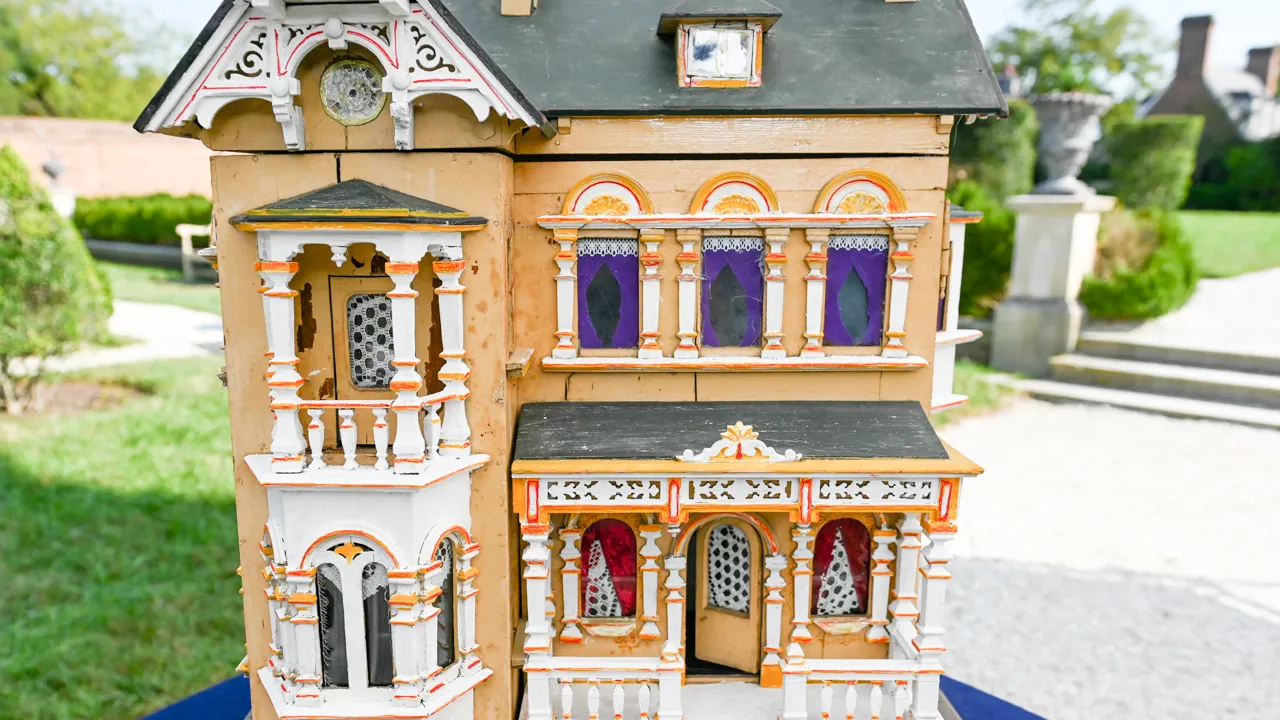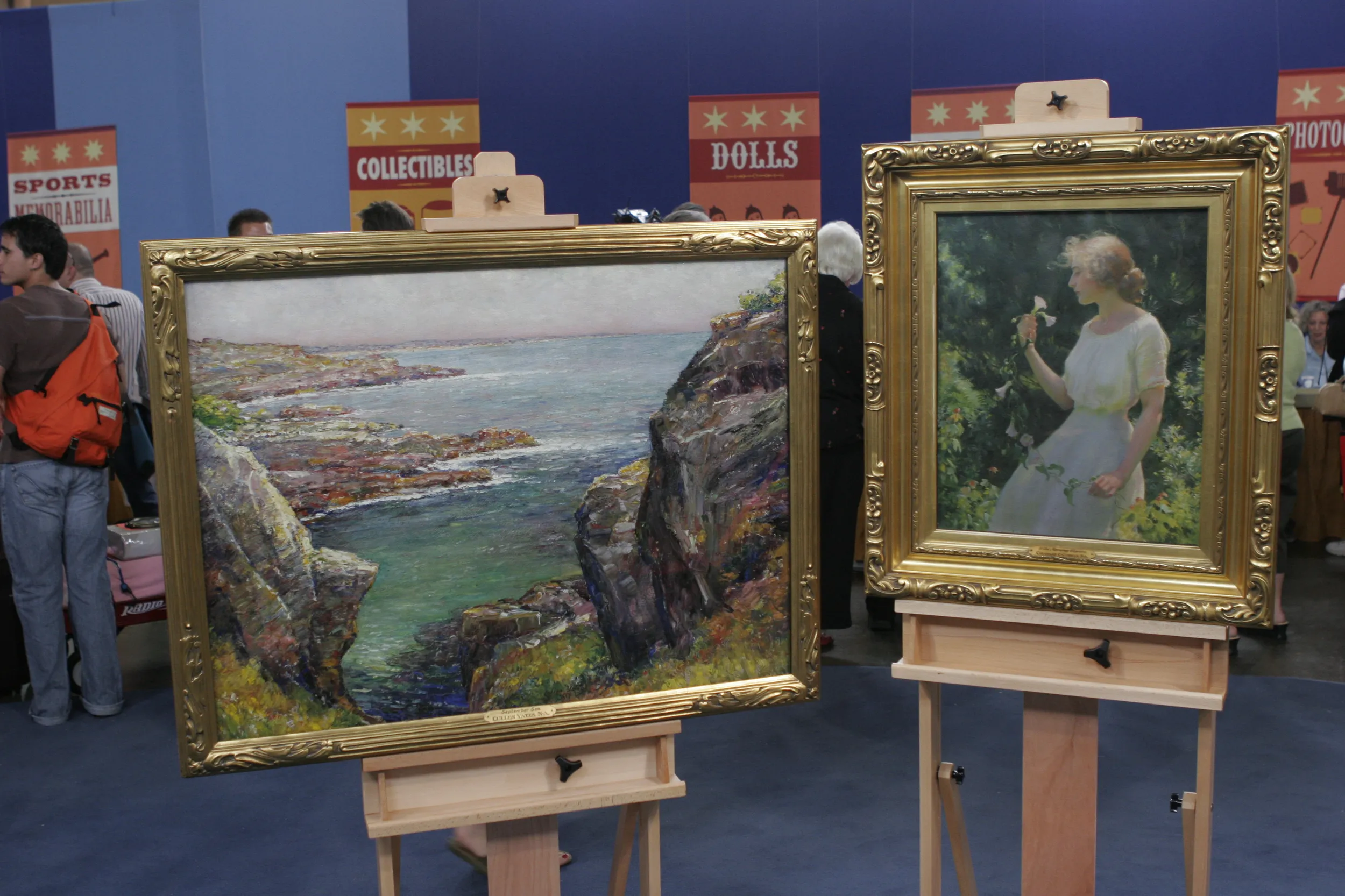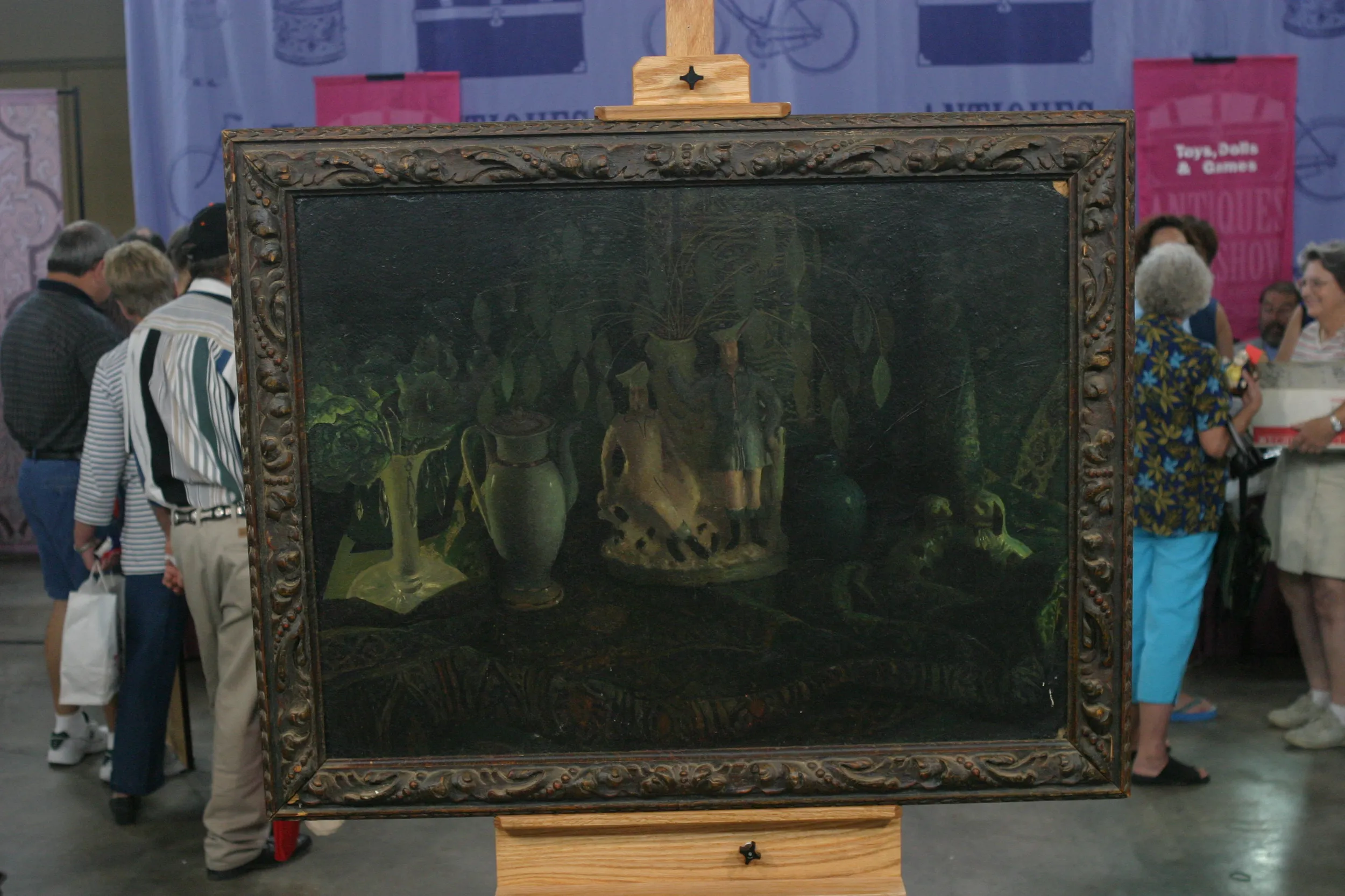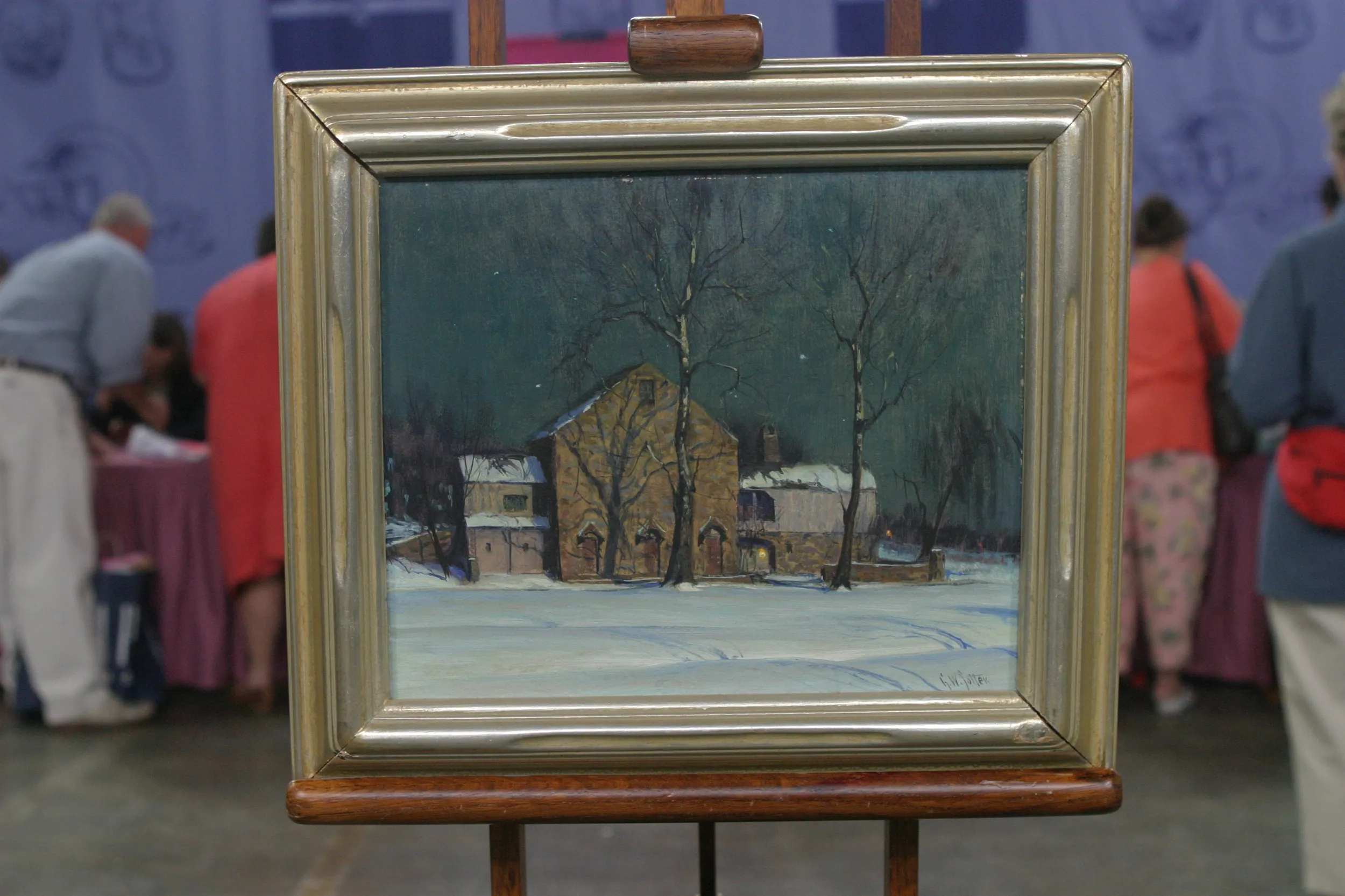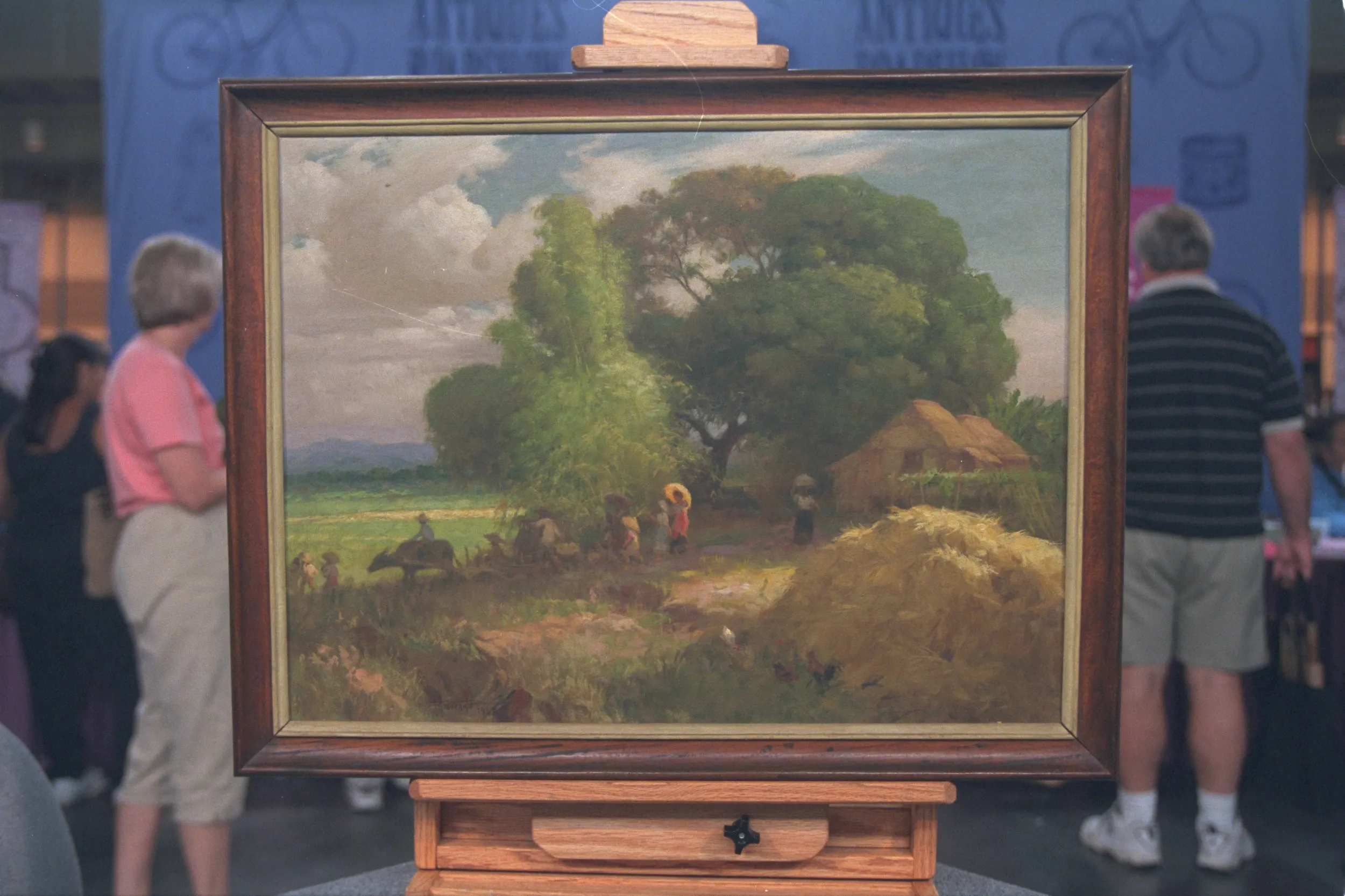GUEST: This is a painting I found at a, an estate sale in Phillipsburg, New Jersey, about seven years ago.
APPRAISER: Mm-hmm. Do you know who the artist is?
GUEST: I believe it's Fidelia Bridges.
APPRAISER: We can see in the lower left that it is signed "F. Bridges," and that is her signature. So it is Fidelia Bridges.
GUEST: Wow. Awesome.
APPRAISER: Fidelia Bridges was quite a character. She was, um, a single woman and she was one of the few women artists who actually made it. She exhibited all the time. She was really someone of note. She was from Salem, Massachusetts. And when she was around 15 years old, her parents passed away. So she was sort of raised by her older sister until she moved to New York and became friends with someone who recommended that she go to art school in Philadelphia, at the Pennsylvania Academy of the Fine Arts. And she studied with a, a well-known artist named William Trost Richards, who is best known for his seascapes. But he was also known as a Pre-Raphaelite artist. And that means that he was someone who followed the tenets of John Ruskin, who was an English philosopher who believed that artists should follow, uh, truth in nature. And so Richards was a proponent of painting foliage, and plants, and trees in a very detailed manner. And Fidelia learned that trait from him. And you can see in this particular piece that she has paid a great deal of attention to the blossoms of the flowers and so on. After her training there, she went to study in Rome for a while, and then came back. Eventually, she moves to Canaan, Connecticut, in 1892. And this particular piece I think was probably done after she moved to Canaan. Stylistically, it looks like it might have been done around 1900 or so. She was born in 1834 and died in 1923. It is definitely a watercolor. And then the highlights of the wildflowers is in a gouache. And it really is stellar in terms of the subject matter, because it's exactly what she was known for doing. This is a particularly large size for her. What did you pay for it?
GUEST: I want to say I paid about $35 to $45. It was, um, in a five-dollar section at the estate sale. It was with a bunch of DVDs and Tupperware. And I ended up buying it in, like, a box lot for $45.
APPRAISER: Wow. Wow.
GUEST: Yeah. So...
APPRAISER: Well, that's, uh, that's really something. The market for women artists is very, very strong right now. And particularly because there were so few women artists of note in the 19th century, her work is, is highly coveted. Also, the Pre-Raphaelites are very popular. If this were being offered in a gallery, we would expect to sell it in the range of $15,000.
GUEST: (laughing): Wow.
APPRAISER: Yeah.
GUEST: Incredible.
APPRAISER: It's, it's, it's an amazing example.
GUEST: Right. Awesome. Well, thank you very much.
APPRAISER: Oh, you're welcome. You're welcome.

